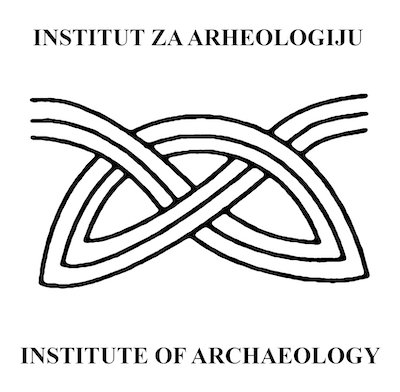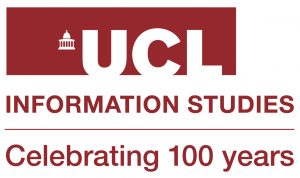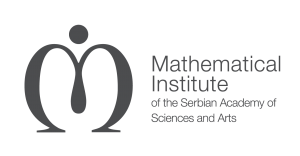Organisations can participate in ARIADNEplus by becoming an Associate Partner. The benefits include access to current research and involvement in the archaeology data community through our network. Associate Partners can increase the visibility of their existing online data through ARIADNE’s Portal; no funding is available but support is provided for the aggregation of metadata into the ARIADNE Catalogue.
The North Atlantic Biocultural Organization (NABO) community initiated the dataARC Project to develop digital research infrastructures to support transdisciplinary research on long-term human-ecodynamics in the North Atlantic. The project brings together data from archaeology, historic documents, climate science, and the humanities, with a geographic focus on Iceland, Greenland and the Orkneys. The infrastructure and toolkits were designed to address the challenges of sharing research data, the connections between those data and high-level interpretations, and the interpretations themselves. In parallel, they were also designed to support the reuse of diverse data that underpin transdisciplinary synthesis research and to contextualise materials disseminated widely to the public more firmly in their evidence base. dataARC was funded by the US National Science Foundation awards SMA 1519660 and 1637076
Founded in 1669, the University of Innsbruck’s main mandate is to focus on research and development, teaching and continuing professional education and training. Today, the University comprises of 16 faculties and 83 departments with over 27000 students and a staff of over 5000 (in 2020). The department of Archaeologies focuses on Pre- and Protohistory and Archaeology of the Middle Ages and the Modern Period as well as Classical Archaeology and Archaeology of the Roman Provinces. In both fields there is research on digital methodologies promoted by ARIADNE-like FAIR data and CIDOC CRM modelling of data. The University will provide a dataset of archaeologic data created in the project “Prehistoric copper production in the eastern and central Alps” and published as Open Research Data, and contribute to the development of an application profile for excavation data, developing a mapping to CIDOC-CRM.

The Directorate for Protection of Cultural Heritage (DPCH) was established in Skopje in 2004 as an independent governmental administrative body which is a constituent part of the Ministry of Culture. The Directorate prepares acts in the field of protection of cultural heritage adopted by the Ministry of Culture and participates in administrative and other procedures related to cultural heritage and its protection, conducted by other competent authorities. Furthermore, the Directorate coordinates the implementation of national and strategically significant projects, plans and programmes concerning the protection of cultural heritage, proposes a National Strategy for protection and use of cultural heritage as well as the National Action Plan for prevention of crimes against cultural heritage and coordinates the international cooperation regarding the protection of cultural heritage. Also, the DPCH is in charge of maintaining a central data base, special national inventories and the National register of cultural heritage, being responsible for activities related to the establishment, organisation and development of the information system for cultural heritage of the Republic of North Macedonia which includes the largest database of digitised cultural heritage in the territory of Macedonia (archaeological sites, medieval monuments, etc.).

Takin.solutions Ltd. is a consultation and services company supporting the implementation of information management solutions in the cultural heritage sector. The company builds on the years of hands-on international experience of its founders in the field of information management in cultural heritage. TAKIN is particularly specialised in the creation and management of semantic data, database management, and cultural heritage documentation. It focuses on digital documentation throughout the data management life cycle, from data acquisition through curation, transformation, presentation and visualisation on the mission of both the research and preservation of cultural heritage. As such, the company implements solutions which both adopt the latest tools and techniques for documentation while also implementing standards that ensure the possibility of the preservation and usability of data in the long term. TAKIN works internationally in CH projects in Europe and North America, in collaboration with other institutions or independently, involving semantic data modelling and archaeological research and documentation and is an official service provider for the Arches software.

Since 2002, the Monuments Board of the Slovak Republic (MBSR) has been the specialised state administration authority established by law for the protection of monuments and historic sites, including archaeology. In the field of archaeology, the MBSR defines the terms and conditions of archaeological fieldwork in Slovakia, checks whether they are conducted by authorised archaeological institutions and companies, and keeps the register and archive of fieldwork reports. Finds discovered by archaeological fieldwork carried out by private companies or public institutions are the property of the Slovak Republic. The MBSR administers these finds on behalf of the state and manages the depositary of archaeological finds and the transfer of the finds to state or public museums. At present, the MBSR is preparing the Monument Information System project, which aims to utilise geospatial technologies in the management of monuments and historic sites and in the registers of archaeological sites and fieldworks, as well as making these datasets available to the professional and general public.

Institute of Archaeology in Zagreb
The Institute of Archaeology in Zagreb has established itself as the central scientific institution for basic and applied archaeological research in the Republic of Croatia, which covers all archaeological periods, while also developing the theory and methodology of research as well as creating ARHINDOKS (Archaeological Information Documentation Centre) as thematic databases of archaeological sites and finds. In addition to basic archaeological research, the staff of the Institute of Archaeology take part in higher education. The Institute of Archaeology has developed a rich publication activity by publishing scientific and professional journals, monographs and proceedings, as well as organising international scientific conferences, round tables and workshops.

University College London (UCL), working with partner the University of South Wales on Natural Language Processing, is our first technical Associate Partner. Andreas Vlachidis from the Department of Information Studies at UCL is developing a series of NLP services for archaeological Named Entity Recognition (NER). These make use of controlled vocabularies and linguistic patterns to automatically suggest subject metadata for archaeological texts, such as grey literature reports.

The British Institute At Ankara (BIAA) supports, enables and encourages research in Turkey and the Black Sea region in a wide range of fields including archaeology, ancient and modern history, heritage management, social sciences and contemporary issues in public policy and political sciences. The BIAA was founded in 1947 and has a library, plant, bone, epigraphic and pottery collections and an archive of source materials produced in the course of archaeological research from the 1940s to the present day. Since 2017, the BIAA has been working towards the establishment of a regional digital repository. The BIAA is working to standardise its datasets and digitise its collections, while producing a list of toponyms and coordinates of settlements in Turkey. The BIAA will be the part of the network and share its data when it is converted into the appropriate new formats.

Founded in 1886, the British School at Athens (BSA) is a UK‐registered charity and is one of seven British International Research Institutes that receive annual funding from the British Academy. The BSA exists to promote research of international excellence in all disciplines pertaining to Greek lands, from fine art to archaeometry and in all periods to modern times. It does so through:
- an academic programme of seminars, lectures, and conferences;
- a programme of research undertaken both alone and in collaboration with UK‐based and other overseas institutions;
- its internationally renowned library;
- the work of the Fitch Laboratory in science‐based archaeological research across the Mediterranean;
- supporting the work of individual researchers from the UK and elsewhere; including applications for study and fieldwork permits; advice on the development of research programmes; accommodation and facilities in Athens and Knossos; and provision of online services;
- making their work known through the publication of its journals and monograph series;
- promoting the use of its archival, laboratory, and museum collections by the scholarly community worldwide;
- providing funding (including studentships and visiting fellowships) for research in Greece, and to enable Greek researchers to visit the UK;
- providing internships and training courses for undergraduates, postgraduates, and schoolteachers.

The University of Minho Archaeology Unit (UAUM) will supply data for two sets of Roman coins, Casa da Bica and the Roman coins of Seminário S. Pedro, S. Paulo e Museu PIO XII which consists of 481 Bronze coins from the Diocletian to Valentinian III periods. Casa da Bica is a hoard of 371 low-imperial bronzes. Among these, the oldest coinage was issued by Tetricus I, with a chronology of 270-273, while the most recent is represented by a Valentinianus III numisma, dated 430-437.

Initiated in 2008, ROCEEH (The Role of Culture in Early Expansions of Humans) is a multidisciplinary research project involving both the cultural and natural sciences. The team of cultural scientists, archaeologists, paleoanthropologists, paleobiologists, geographers, and database specialists are from the Senckenberg Research Institute in Frankfurt and the University of Tübingen. ROCEEH’s mission is to generate a systemic understanding of “becoming human” and encompasses the time period from three million to 20,000 years before present, across Africa and Eurasia. ROCEEH will make their palaeontology records from the ROAD database available in the Portal.

The Mathematical Institute of the Serbian Academy of Sciences and Arts (MISANU) is a unique centre for mathematically-oriented research in Serbia, with more than 75 full-time researchers, which collaborates with numerous research institutions and universities in Serbia, neighbouring countries and abroad. In 2021, by the decision of the Government of the Republic of Serbia, MISANU was elevated to the status of a national Institute of the Republic of Serbia. It consists of three scientific research departments for Mathematics, Mechanics and Computer Sciences. They organise three colloquiums and as many as 13 seminars, at which members exchange views and ideas through lectures and discussions. MISANU has been involved in multidisciplinary projects dedicated to the digitisation of scientific and cultural heritage for more than 20 years, and it is the leading Serbian institution in this field.

Founded in 1846, the École française d’Athènes is the first foreign institute established in Greece. The School is a centre of advanced research in humanities whose core mandate is the study of Greece in its Balkan and Mediterranean contexts, from prehistoric time to the present. This mission encompasses the training of a new generation of academics, facilitating early-career researchers’ access to the field and the sources. It supports their integration within a high-level international environment. The school is one of the Écoles françaises à l’étranger (EFE), a network of five French higher education and research establishments based abroad (Athens, Rome, Madrid, Cairo and Asia) : https://www.resefe.fr/

The Census is a historic project which began in 1946 and has been sustained by international collaborations for over 75 years. Its fundamental research aim has been to trace the knowledge of antique monuments in the Renaissance era (1400-1600). Over its first decades the project grew as a partnership between New York University and the Warburg Institute under the direction of the archaeologist Phyllis Pray Bober. Using a system of index cards and photographs, Bober and her collaborators linked Renaissance texts and images with the antique monuments they reference. In the 1980s, in partnership with the Bibliotheca Hertziana in Rome, the project expanded to include the reception of antique architecture. With support from the Getty Trust, the Census was digitised in the 1980s, and its database has continued to expand ever since.
Since the 1990s, the Census has been hosted at the Institut für Kunst- und Bildgeschichte at the Humboldt-Universität in Berlin. Its database, available online at www.census.de, relates antique monuments (such as statues and other types of sculpture, inscriptions, buildings, and coins) with Renaissance texts and images (such as prints, drawings, statuettes, medals and paintings). Each antique monument is linked with the Renaissance documents that reference it, and with images and bibliography related to its reception in the period 1400-1600. Beginning in 2009, the Census database also began to incorporate data from the ‘Corpus Winckelmann’ related to the knowledge of antiquities in the 17th and 18th centuries.
There are numerous ways of searching the database, for example, for Renaissance documents, locations, persons, images or museum collections. A search for a particular antique monument in the Census database will provide Renaissance documents, bibliography, and images as well as information on its provenance and location in the Early Modern era and its history of restoration.
Currently the Census database relates over 20,000 antique monuments to over 60,000 post-antique documents. It contains over 55,000 images and over 60,000 bibliographic references.
Census website: https://www.census.de/home/
Census database: https://database.census.de

